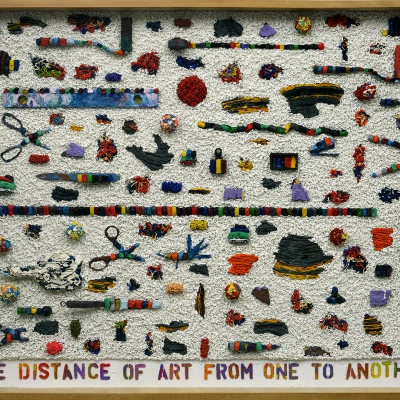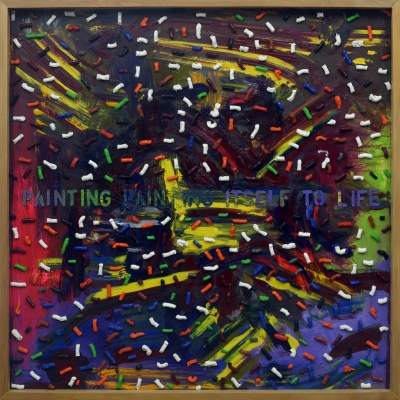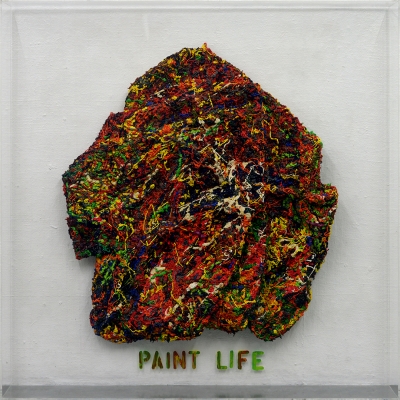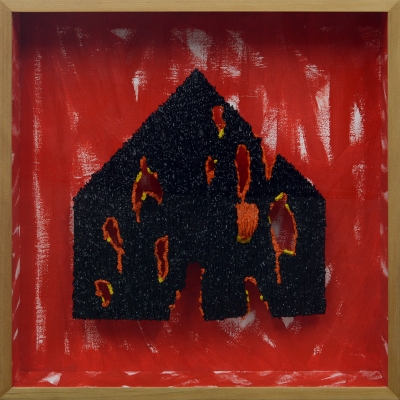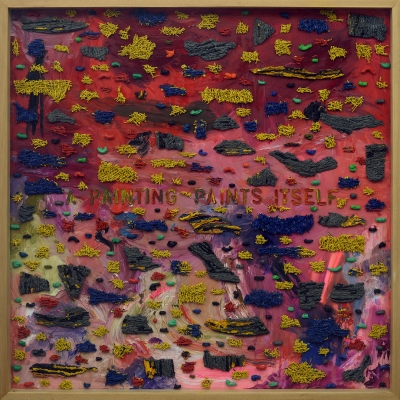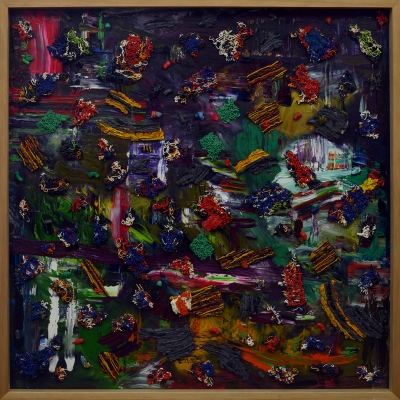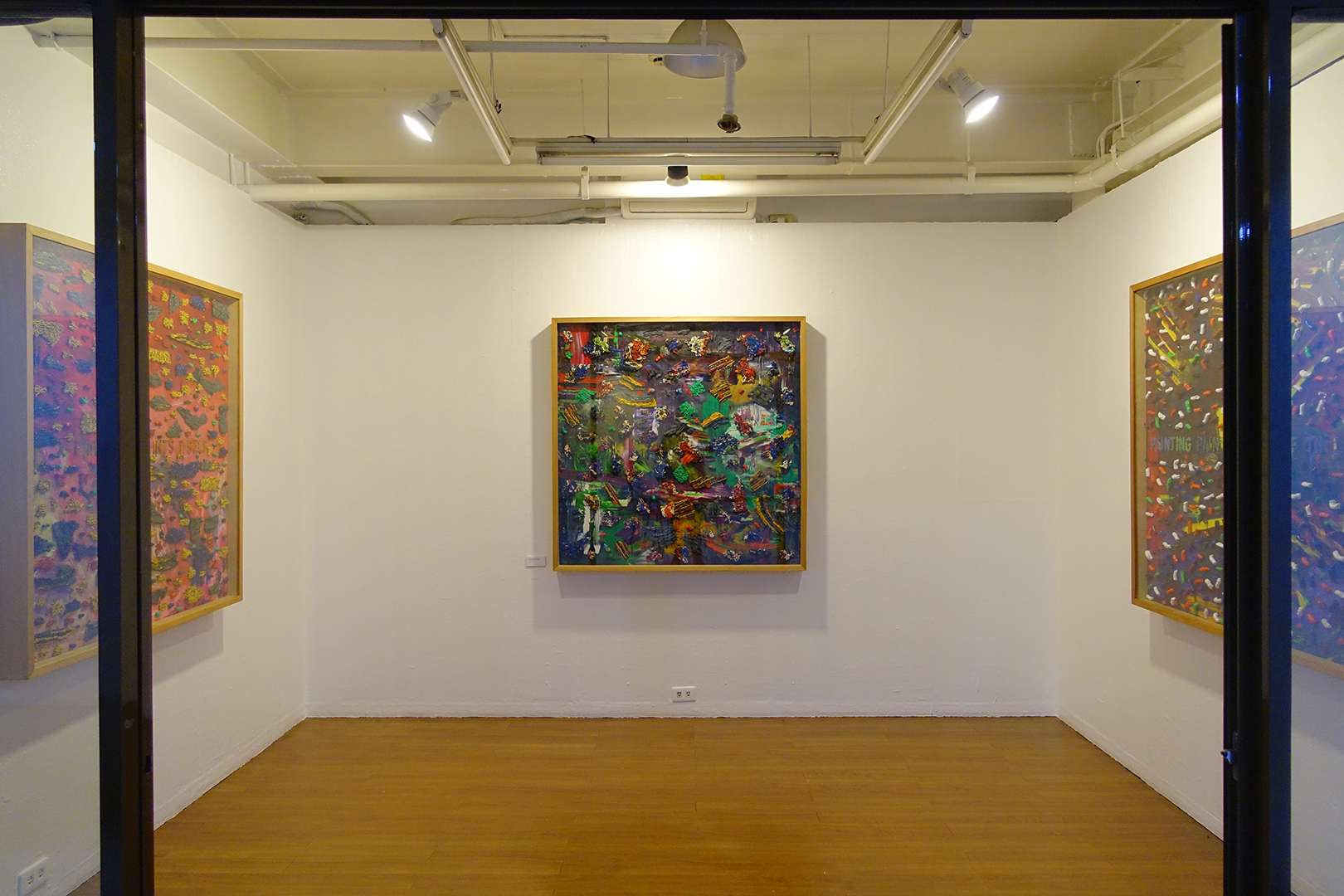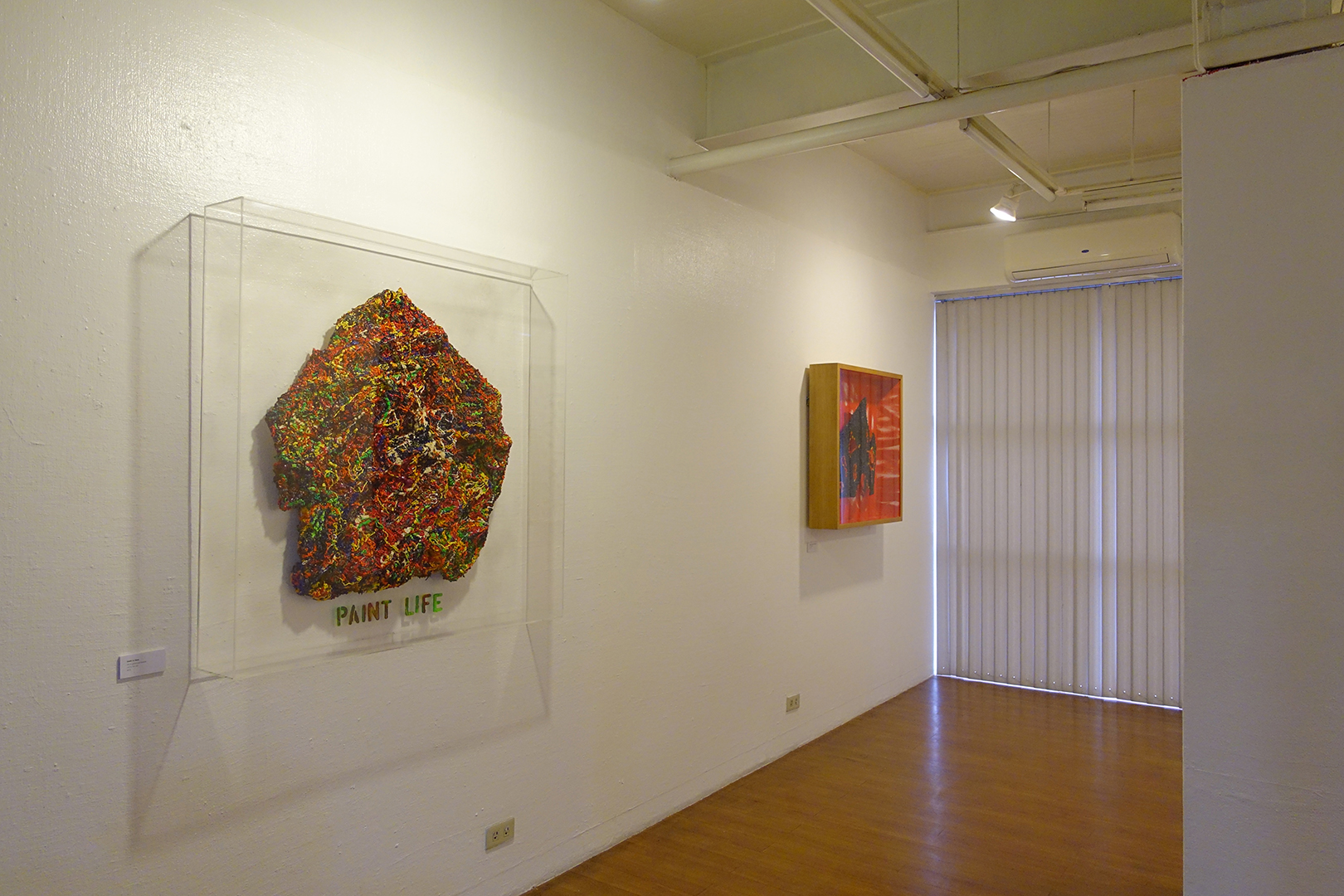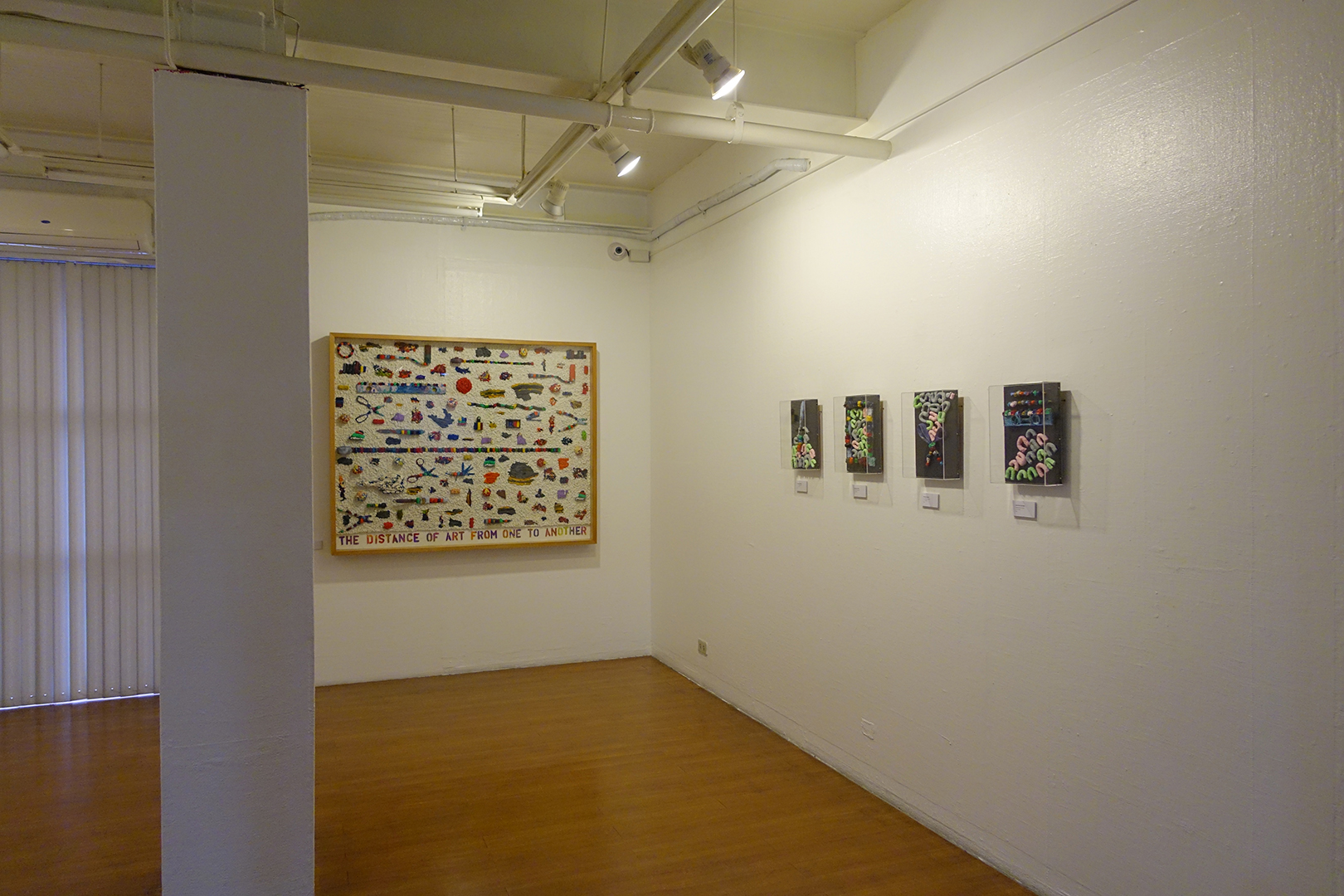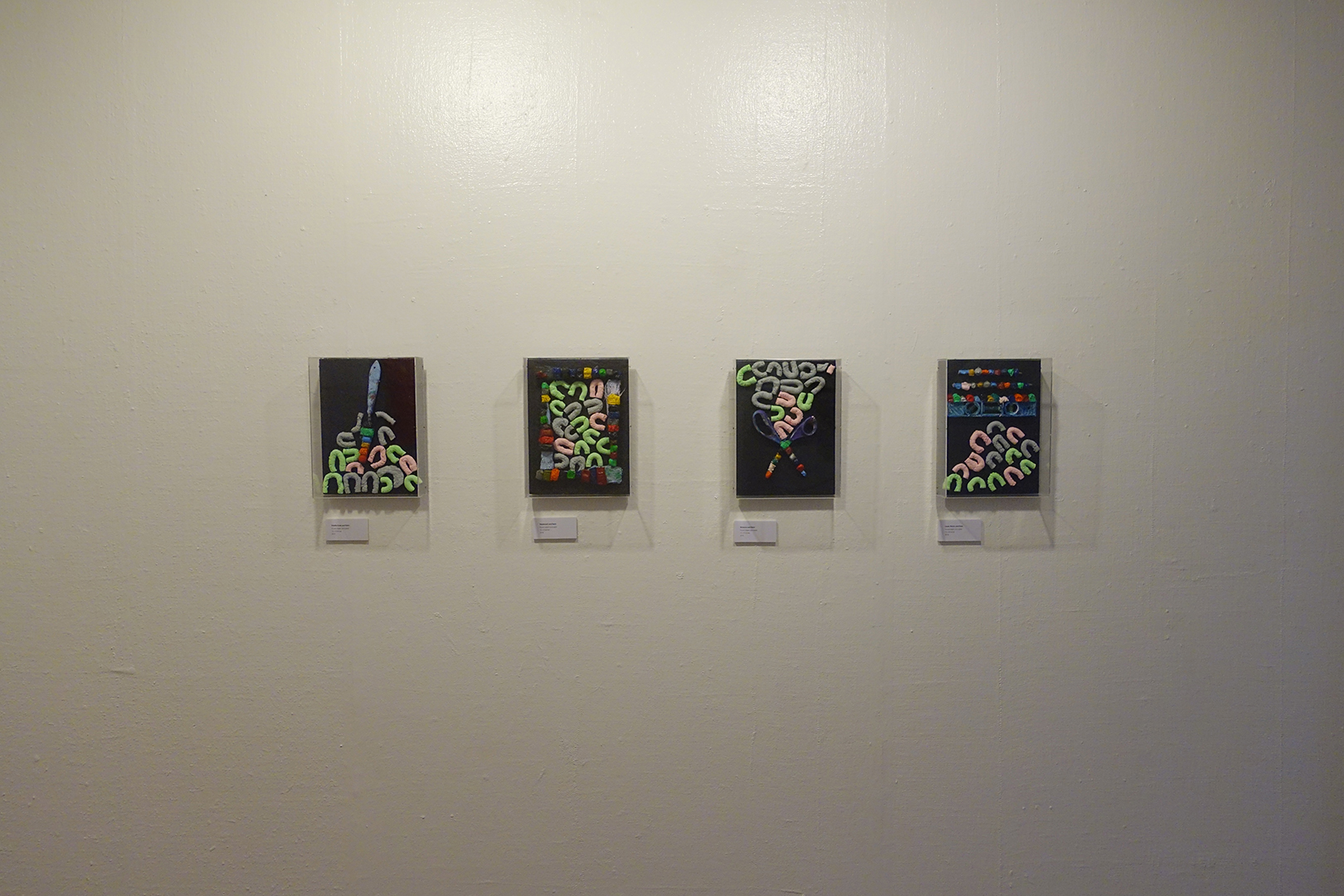An artist’s intervention to his surroundings conjures a cathartic image of a philosopher making sense of the world and allows his ideas breathe it’s own epiphanies. Lubin Nepomuceno’s ever-meticulous art making process of combining paint and found objects re-affirms that ‘painting’ cannot die, that it persists to evolve whether from the peripheries or innermost aspects of contemporary art. Nepomuceno’s Painting Painting investigates the potency of painting as an active medium, as a subject transcending itself and as an object with reflexive value to its viewer. His works serves as an overture to our own investigation of ‘painting’ as a concept, object and subject.
In his works, Nepomuceno presents us with abstracted narratives from thick impasto oil paint covering layers of colors; he appropriates found objects with paint, cementing a relationship with other elements in each composition; and uses texts as syntactical device in decoding the entire picture. In his work Distance Apart, we are confronted with the text “The Distance Of Art From One To Another” and faced with discarded hardware materials, die-cast toy cars and other personal objects covered with oil paint. This scheme is a reminiscent of our primary school visual learning aids, when texts and images facilitate our understanding and learning of things, their relationships, meaning and value.
Nepomuceno’s sculptural aesthetics compels his paintings to be experienced with all its tactility stretching beyond the two-dimensional boundaries an oil paint inherently possess. His choice of primary medium is a coy reference to art history from the 15th century painters to modern master who used oil paint as principal medium but he reconstitutes the pigments that they may be viewed beyond their color, texture or shape. In his chosen manner, the conception of an image does not start when the paint touches the ground; rather, it begins when the paint is squeezed out of the tube; he then allows each collage of paint find their own place – to create their own abstraction and reconstruction.
To this effect, the texts in his works of ‘Painting Painting Itself to Life’ to ‘Painting Paints Itself’ cease to be just play of words, they become ontological truths. Nepomuceno’s junction of personal memories with his found objects invigorates their own reality when mended witheach pigment’s implicit history. In Painting Painting, LubinNepomuceno ceases to be the creator of meaning, he allows his paintings to author their own, to exhale their own sense and semantics.
— leCruz




